The leading families and players had changed between 1450 and 1471; here’s a brief summary of the major families that would influence events under Edward IV and his successors. Below you will find:
- Stanleys
- Woodvilles
- Hastings
- Margaret Beaufort
- The Tudors
- Stafford
- Percy
- de la Pole
- de Vere, Earls of Oxford
- Bourchiers
The Stanleys
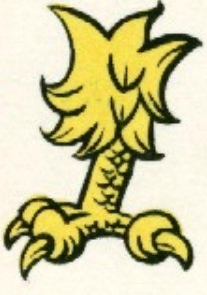 The Stanleys came from Cheshire in the North West of England. William Stanley was a violent and nasty Master Forester in the early 14th Century, with sons, William and John Stanley. John liked violence too, and fought in the French wars in Aquitaine. Then in 1376 the brothers pushed their luck toofar when they forced entry to Thurstaston Hall and murdered one Thomas Cloxton. Outlawed, things looked black for John Stanley. But with the French wars going on he was too good a man to be thrown away – so a captain hired him for the war in France, and in so doing held off the law. By 1405, John Stanley had made his fortune from the wars and from the Lancastrians, and had risen the heights as king of Mann.
The Stanleys came from Cheshire in the North West of England. William Stanley was a violent and nasty Master Forester in the early 14th Century, with sons, William and John Stanley. John liked violence too, and fought in the French wars in Aquitaine. Then in 1376 the brothers pushed their luck toofar when they forced entry to Thurstaston Hall and murdered one Thomas Cloxton. Outlawed, things looked black for John Stanley. But with the French wars going on he was too good a man to be thrown away – so a captain hired him for the war in France, and in so doing held off the law. By 1405, John Stanley had made his fortune from the wars and from the Lancastrians, and had risen the heights as king of Mann.
Thomas Stanley (1433-1504) and William Stanley (1435-1495) were the grandsons of John Stanley. 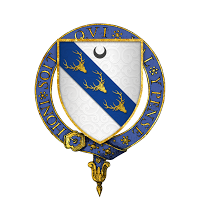 Thomas Stanley was the eldest, and an outrageous and shameless trimmer and turncoat. At the battle of Blore Heath this Lancastrian stalwart waited to see what happened and watched Audley’s be slaughtered. William appears to have been made of finer stuff and was in the battle itself, and fled with Edward after Ludlow. After Northampton in 1461, Thomas also switched allegiance to York.
Thomas Stanley was the eldest, and an outrageous and shameless trimmer and turncoat. At the battle of Blore Heath this Lancastrian stalwart waited to see what happened and watched Audley’s be slaughtered. William appears to have been made of finer stuff and was in the battle itself, and fled with Edward after Ludlow. After Northampton in 1461, Thomas also switched allegiance to York.
The Stanleys defended and enhanced their strength in Cheshire and Lancaster ruthlessly and against all-comers; Thomas was called in front of the king for the murder of John Butler – but Edward could do nothing; they even made the duke of Gloucester’s position in the North West untenable.
Thomas Stanley married Margaret Beaufort in 1472.None the less, the power of the Stanleys made them an essential ally for Yorkist rule. What’s pretty clear is that they were untrustworthy, and neither Edward IV or Richard III trusted them.
The Woodvilles
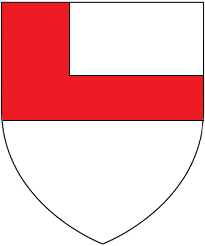 After the bloodletting of the Readeption, Anthony Woodville (1440-1483), then Lord Scales, became the 2nd Earl Rivers. Anthony was the brother of the Queen, Elizabeth Woodville. Rivers was a renaissance man – famous jouster, but a man who wore a hair shirt, who went on pilgrimage and crusade. Despite the fury and dislike directed at the Woodvilles, Rivers himself never quite played the central role Edward IV might have wanted him to; he went of crusade at a crucial point, showed more interest in serving God and the Renaissance than fulfilling a political role. However, in 1473 he was appointed Tutor to Edward’s son and heir, Edward; taking the heir to Ludlow and helping him manage his estates.
After the bloodletting of the Readeption, Anthony Woodville (1440-1483), then Lord Scales, became the 2nd Earl Rivers. Anthony was the brother of the Queen, Elizabeth Woodville. Rivers was a renaissance man – famous jouster, but a man who wore a hair shirt, who went on pilgrimage and crusade. Despite the fury and dislike directed at the Woodvilles, Rivers himself never quite played the central role Edward IV might have wanted him to; he went of crusade at a crucial point, showed more interest in serving God and the Renaissance than fulfilling a political role. However, in 1473 he was appointed Tutor to Edward’s son and heir, Edward; taking the heir to Ludlow and helping him manage his estates.
Elizabeth Woodville’s sons by her first marriage were Thomas Grey (1455-1501) and Richard Grey 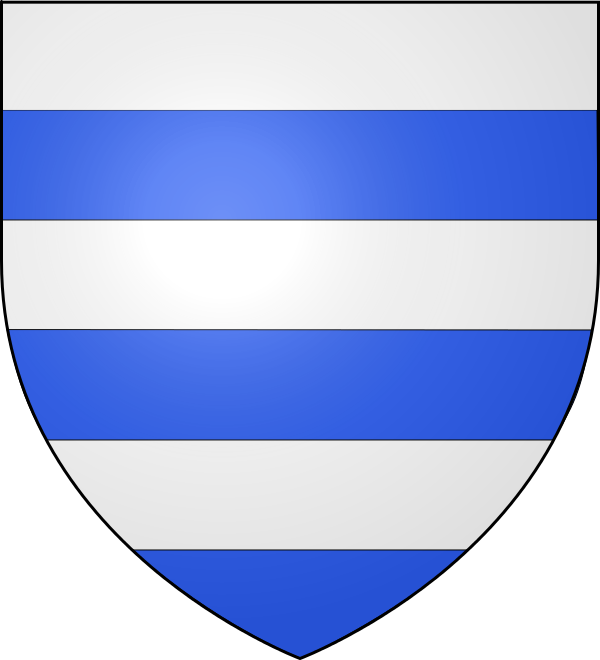 . Thomas was made Marquess of Dorset, and to give him the lands to back up his new dignity, was given in marriage Cecily Bonville, heir to the Bonville and Harington lands in the North and South West. You might remember the Bonville’s and their war with the Courtenays, which had rubbed out the male line; it was a marriage that fuelled resentment of the Woodvilles as power hungry parvenus. Dorset was not the sharpest knife in the drawer, which was unfortunate since he was to find himself in some complicated political situations.
. Thomas was made Marquess of Dorset, and to give him the lands to back up his new dignity, was given in marriage Cecily Bonville, heir to the Bonville and Harington lands in the North and South West. You might remember the Bonville’s and their war with the Courtenays, which had rubbed out the male line; it was a marriage that fuelled resentment of the Woodvilles as power hungry parvenus. Dorset was not the sharpest knife in the drawer, which was unfortunate since he was to find himself in some complicated political situations.
Thomas had a younger brother, Sir Richard Grey (d.1483). He was but 14 or so in 1471, and wasn’t to enter public life until 1475 when he took part in a joust.And in 1482 Edward IV started to send honours his way – sharing the lands of the Duchy of Exeter, being given the lordship of Kidwelly in Wales, being made constable of Chester. In 1483 he was with his uncle Rivers in Ludlow.
Lionel Woodville (c.1454-1484) was another of Elizabeth’s brothers; in 1471, of course he was but a nipper; but would become the Bishop of Salisbury, and though not at Edward IVths funeral, would have some involvement in the events afterwards.
As members of the king’s council, the Woodvilles were constantly resented as parvenus who had too much influence with the king, whether that was true in fact or not. Similarly, his younger brother Edward Woodville would be a player in later events.
Hastings
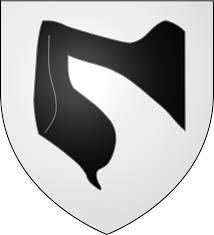 William Hastings (1430-1483) had been solidly close to Edward from the start. Infamously in pretty much everything – including his lovelife. Jane Shore seems to have been the object of both his and Edward IVth’s admiration. Hastings combined closeness to Edward with the good opinion of pretty much everyone. He was, in the words of Thomas More, an
William Hastings (1430-1483) had been solidly close to Edward from the start. Infamously in pretty much everything – including his lovelife. Jane Shore seems to have been the object of both his and Edward IVth’s admiration. Hastings combined closeness to Edward with the good opinion of pretty much everyone. He was, in the words of Thomas More, an
‘honourable man, a good knight and a gentle … a loving man, and passing well beloved’.
Hastings resumed his office as Chamberlain of England, a post that gave him constant access to the seat of all power, the king. Hastings, nice guy though he apparently was, took himself off to the First Class carriages in the gravy train, and settled back to watch the spondulicks flood in. Everyone one knew that if you needed something doing, Hastings was your man. So you wanted Hastings to be well disposed towards you. Now you might say that you don’t care much for money, because money can’t buy you love, but in this particular instance you would be dead wrong. Religious houses made him their steward, barons sent him gifts. Richard Earl Rivers dug around the back of the sofa and raised his wife’s purse and sent Hastings £26 13s and 4d; Clarence made Hastings his Chief Steward. The habit went international; King Louis of France gave him a pension of 2,000 crowns, Charles Duke of Burgundy gave him 1,000 ecus. Hastings was a man you wanted on your side; and the honours and offices that Edward heaped on him in 1471 were just one part of the way he was rewarded.
Margaret Beaufort
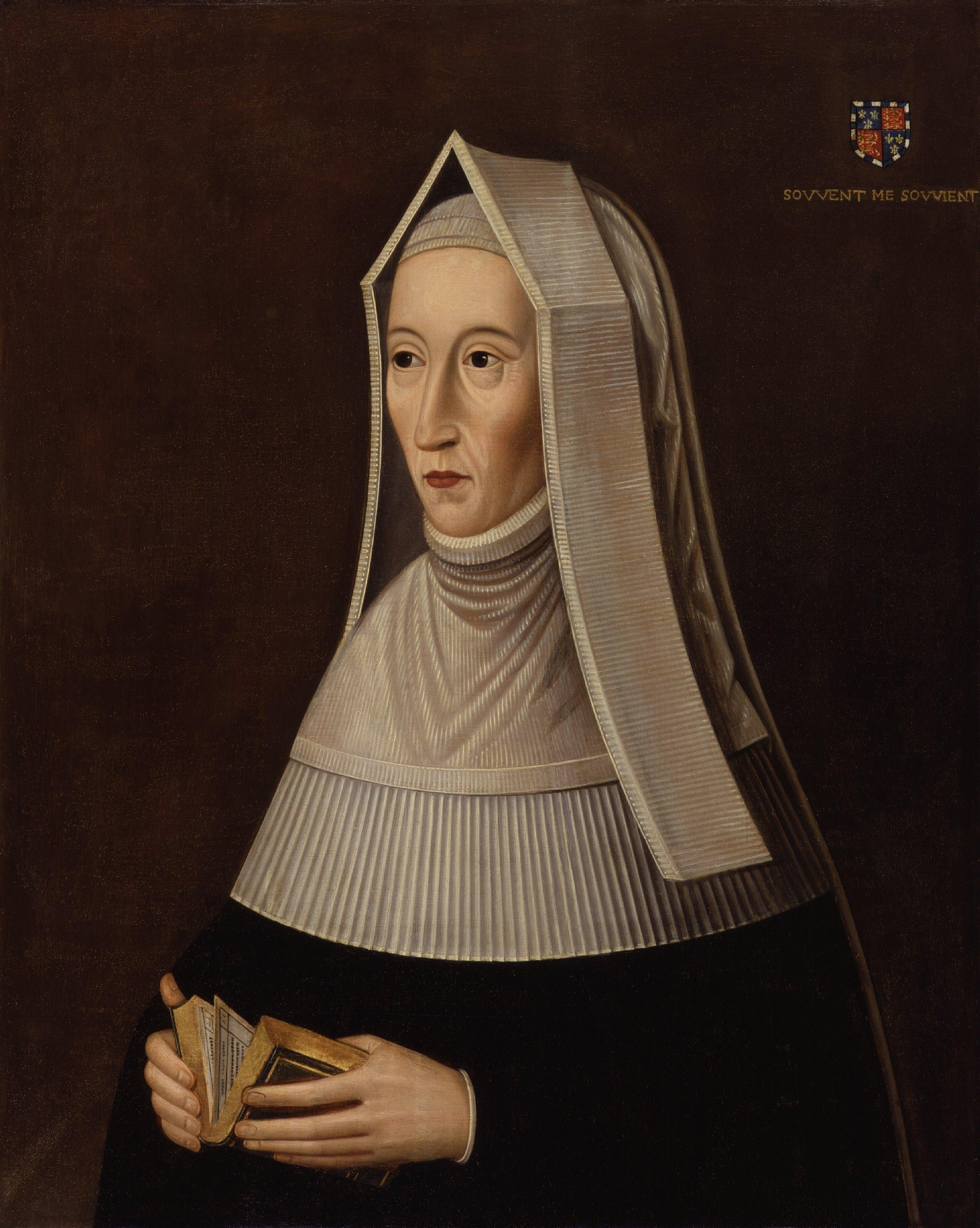 Margaret Beaufort (1443-1509) was a clever and tough political survivor. Over the next decade she effectively gained the trust of Edward, even while Edward was trying to hunt down and kill her son. Through the 1460’s she’d been protected by her husband, Stafford. At the Readeption of Henry VI, she’d taken her son to see the king, as a Lancastrian restored to influence. But with the return of Edward and then the death of Stafford in 1471 she needed a protector, and although she and Stafford had been close, she had no time to hang around feeling sorry for herself. The man she chose as her protector was Thomas Stanley. Stanley had connections and already had children and so was looking mainly for status, which Margaret brought. So they got hitched, and Margaret began to use his connections to work towards the goal that dominated her life –protecting the rights and life of her only son, Henry Tudor, and to restore him to his father’s patrimony as Earl of Richmond.
Margaret Beaufort (1443-1509) was a clever and tough political survivor. Over the next decade she effectively gained the trust of Edward, even while Edward was trying to hunt down and kill her son. Through the 1460’s she’d been protected by her husband, Stafford. At the Readeption of Henry VI, she’d taken her son to see the king, as a Lancastrian restored to influence. But with the return of Edward and then the death of Stafford in 1471 she needed a protector, and although she and Stafford had been close, she had no time to hang around feeling sorry for herself. The man she chose as her protector was Thomas Stanley. Stanley had connections and already had children and so was looking mainly for status, which Margaret brought. So they got hitched, and Margaret began to use his connections to work towards the goal that dominated her life –protecting the rights and life of her only son, Henry Tudor, and to restore him to his father’s patrimony as Earl of Richmond.
The Tudors
With the defeat and death of the Beauforts, only Jasper Tudor (1431-1495) and Margaret Beaufort’s son Henry Tudor  (1457-1509), heir to the earldom of Richmond, were left. Jasper Tudor was a life long and relentless fighter for the Lancastrian cause, and of his nephew, Henry. In 1471, Henry was the only claimant to the throne left who could challenge the Yorkist right to the throne. Both had fled to Brittany, to the tender mercies of Duke Francis. The Duke knew a valuable political card when he saw one, as he fought to maintain Breton independence from France. So Jasper and Henry were held in comfortable captivity, moved around Brittany to avoid potential assassins, and Francis politiced with Edward and Louis, tempted to throw the Tudors to the wolves if the gain were big enough. Thus Henry Tudor spent his life under constant threat and fear.
(1457-1509), heir to the earldom of Richmond, were left. Jasper Tudor was a life long and relentless fighter for the Lancastrian cause, and of his nephew, Henry. In 1471, Henry was the only claimant to the throne left who could challenge the Yorkist right to the throne. Both had fled to Brittany, to the tender mercies of Duke Francis. The Duke knew a valuable political card when he saw one, as he fought to maintain Breton independence from France. So Jasper and Henry were held in comfortable captivity, moved around Brittany to avoid potential assassins, and Francis politiced with Edward and Louis, tempted to throw the Tudors to the wolves if the gain were big enough. Thus Henry Tudor spent his life under constant threat and fear.
Stafford, Duke of Buckingham
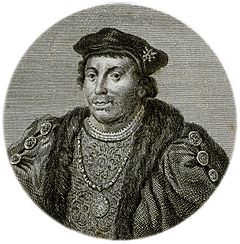 Henry Stafford (1455-1483) was the senior Stafford line, and grandson of the 1st Duke who had been the staunch defender of the Lancastrian cause. Buckingham made his peace with the Yorkist regime, marrying Catherine Woodville, sister of the Queen. With income of £3,000 a year, Buckingham was as rich as any other magnate, and after the Readeption was for a while a close member of Edward’s household. But in 1475 he appeared to fall out of favour with Edward IV, sent home early from France, and from then was excluded from real political power under Edward, despite a brief re-appearance as High Steward to oversee the death of Clarence. He stayed in his caput in Brecon, clearly not content to be so far from the centre of power.
Henry Stafford (1455-1483) was the senior Stafford line, and grandson of the 1st Duke who had been the staunch defender of the Lancastrian cause. Buckingham made his peace with the Yorkist regime, marrying Catherine Woodville, sister of the Queen. With income of £3,000 a year, Buckingham was as rich as any other magnate, and after the Readeption was for a while a close member of Edward’s household. But in 1475 he appeared to fall out of favour with Edward IV, sent home early from France, and from then was excluded from real political power under Edward, despite a brief re-appearance as High Steward to oversee the death of Clarence. He stayed in his caput in Brecon, clearly not content to be so far from the centre of power.
Henry Percy, 4th Earl of Northumberland (1449-1489)
Edward IVth had brought the Percies down for their support of Henry VI and Margaret. It ended in 1469 with Henry Percy 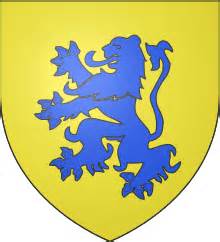 languishing in Fleet prison attended by 4 servants while John Neville took over their long-held role as Earl of Northumberland, and kings in the north. But then the north was difficult to rule without the Percies, and Henry was restored; then John Neville rebelled, Henry Percy failed to attack Edward on his return – and so slowly the Percies were back.
languishing in Fleet prison attended by 4 servants while John Neville took over their long-held role as Earl of Northumberland, and kings in the north. But then the north was difficult to rule without the Percies, and Henry was restored; then John Neville rebelled, Henry Percy failed to attack Edward on his return – and so slowly the Percies were back.
None the less it was not all plain sailing. Even the Percies, with estates generating £3,200 plus offices of £800, were outgunned by Richard, Duke of Gloucester. Henry tried hard to get along, but in 1474 the two were called in front of Edward, and the result was an indenture between them; Percy retained his spehere of influence but was forced to accept Gloucester’s supremacy. None the less Percy and Gloucester seemed to work together amicably.
de la Pole; Dukes of Suffolk and Earl of Lincoln
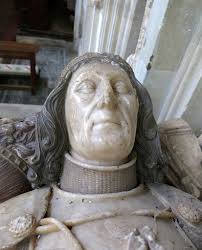 John Suffolk (1442-1492), 2nd Duke of Suffolk, was the son of the rather misunderstood William de la Pole and Alice Chaucer. His father’s death was a brutal affair at the hands of Parliament and the Yorkists (have a look at the letter William wrote to his young son, here); but despite this, Alice seemed determined to reconcile her family with York, marrying John to Richard of York’s daughter Elizabeth in 1458. John followed her lead, loyal throughout to Edward IV through Warwick’s campaign in 1470,and distrusted by the Readeption regime.
John Suffolk (1442-1492), 2nd Duke of Suffolk, was the son of the rather misunderstood William de la Pole and Alice Chaucer. His father’s death was a brutal affair at the hands of Parliament and the Yorkists (have a look at the letter William wrote to his young son, here); but despite this, Alice seemed determined to reconcile her family with York, marrying John to Richard of York’s daughter Elizabeth in 1458. John followed her lead, loyal throughout to Edward IV through Warwick’s campaign in 1470,and distrusted by the Readeption regime.
The trouble was that Suffolk had very little money – income from his estates in east Anglia and the  Chilterns was well below the £1,000 needed for an earl. And also for some reason despite his loyalty to Edward, and despite his marriage to Edward’s sister, he never got much land or regard from Edward and was not part of the royal council.
Chilterns was well below the £1,000 needed for an earl. And also for some reason despite his loyalty to Edward, and despite his marriage to Edward’s sister, he never got much land or regard from Edward and was not part of the royal council.
One thing John and Elizabeth were good at though was having children – 11 as it happens, though not all of them lived to their majority. But through their mother, they all had a claim to the throne from the Yorkist side – though seemingly something of an irrelevance in 1471. A few to mention:
- John de le Pole (1462-1487) – eldest son of John, created Earl of Lincoln in 1467, and knighted with Edward IV’s sons
- Edmund de la Pole (1471-1513), 3rd Duke of Suffolk
- Richard de la Pole (1480-1525)
de Vere, Earls of Oxford
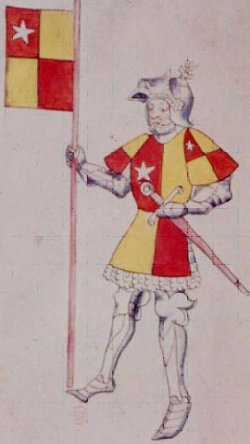 The de Vere family was one of the oldest in the peerage, reaching back to Aubrey de Vere and the conquest. But never one of the richest. From 1141, the head of the family was the line of Earls of Oxford, a line that carried on until the 20th Earl in 1703.
The de Vere family was one of the oldest in the peerage, reaching back to Aubrey de Vere and the conquest. But never one of the richest. From 1141, the head of the family was the line of Earls of Oxford, a line that carried on until the 20th Earl in 1703.
In the Wars of the Roses, the de Vere’s took a partisan approaches, rather than hedging and trimming like the Stanleys. The de Vere’s were Lancastrians, and then supporters of Henry Tudor. For example, John de Vere and his son Aubrey were executed in 1461 for treason by Edward IVth.
The 13th Earl of Oxford was John de Vere (1442-1513). He went into exile after the defeat at Barnet where he had led one wing of Warwick’s army. In 1473, de Vere (having been stripped of title of Earl of Oxford) was active in trying to foster rebellion, eventually capturing St Michael’s Mount. But England had no time for rebellion against York – and was captured. BY 1478, he was held in the castle of Hammes, in the Pale of Calais, where he leaped into the mat in either a failed attempt at escape or suicide.
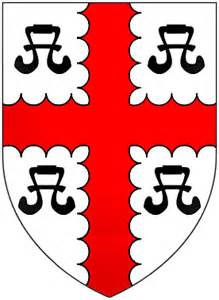 Bourchier, Earls of Essex and Archbishop of Canterbury
Bourchier, Earls of Essex and Archbishop of Canterbury
Henry Bourchier (1408-1483) was a supporter of York from the battle of St Albans in 1455, made Treasurer of England buy Edward IV and Earl of Essex in 1461. Thomas Bourchier (1411-1486) was Archbishop of Canterbury from 1454, and became chancellor in 1455. The Bourchiers were both supporters of the Yorkists but seemed content to play their role under the rule of either faction.

Fyi, link for William de la Pole’s letter to his son is missing
Thank you…now corrected…
I think that Margaret BEAUFORT WAS A BRILLIANT lady who deserved to be happy bless her soul
I think that Margaret BEAUFORT was a brilliant lady
why is the stanley crest a chicken leg? i am confused :/
I am forced to admit that I have no idea. May not be a chicken though. Some sort of falcon or eagle would be more heroic…
true fam
( ͡° ͜ʖ ͡°)
suh
How do we know what incomes were required for each level of peerage? If an earl was 1000 pounds what was the supposed income expected to maintain a Duke?
The idea is mentioned at several points by several modern historians but I confess I don’t know whether it was a contemporary rule or a modern calculation. Dukes are a bit different, being for the most part royal, and therefore no king would allow them to do any other than cut a dash!